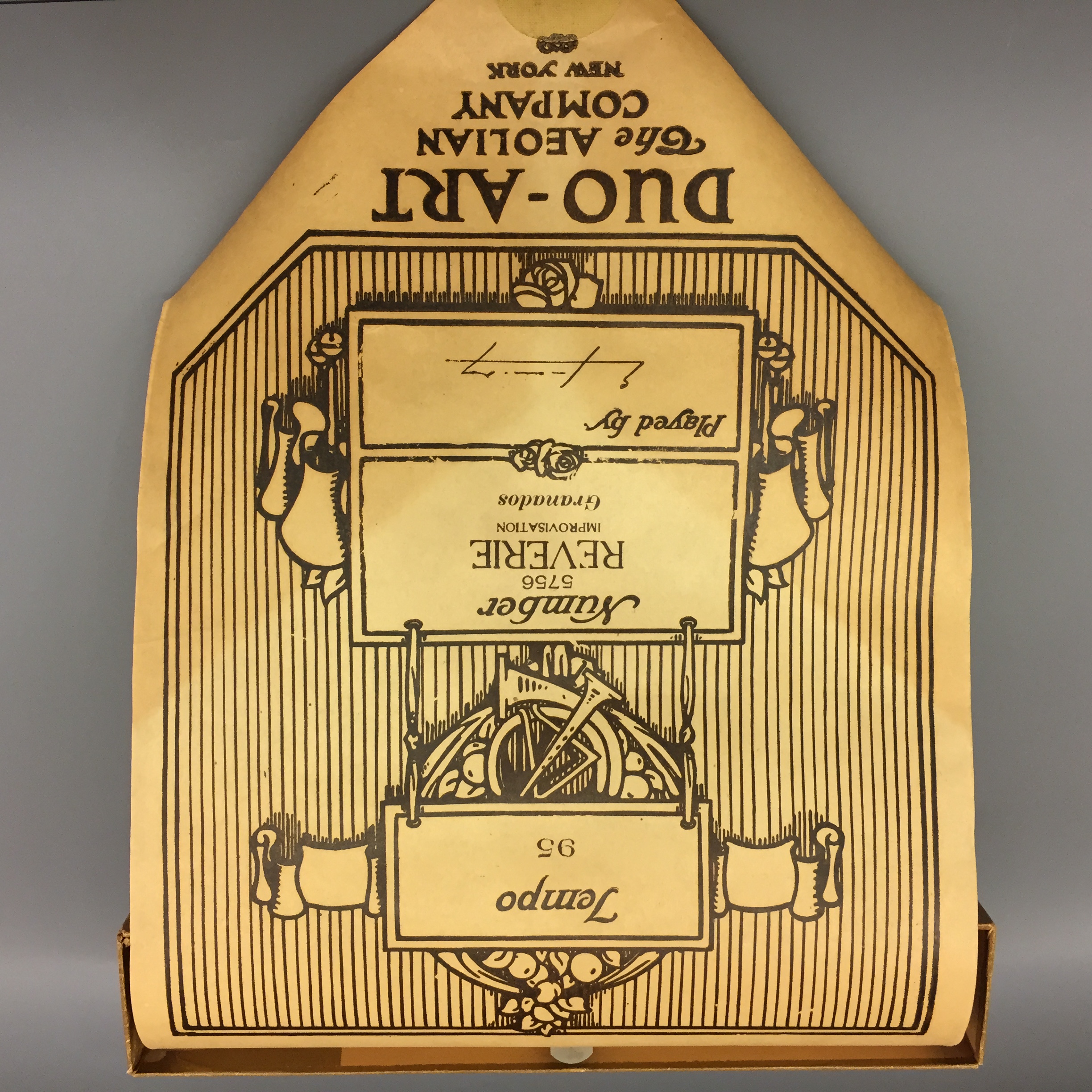Duo-Art on:
[Wikipedia]
[Google]
[Amazon]
 Duo-Art was one of the leading
Duo-Art was one of the leading
The world's greatest authority on the Duo-Art piano
Obituary of Gerald Stonehill,
 Duo-Art was one of the leading
Duo-Art was one of the leading reproducing piano
A player piano (also known as a pianola) is a self-playing piano containing a pneumatic or electro-mechanical mechanism, that operates the piano action via programmed music recorded on perforated paper or metallic rolls, with more modern im ...
technologies of the early 20th century, the others being American Piano Company (Ampico), introduced in 1913 too, and Welte-Mignon
M. Welte & Sons, Freiburg and New York was a manufacturer of orchestrions, organs and reproducing pianos, established in Vöhrenbach by Michael Welte (1807–1880) in 1832.
Overview
From 1832 until 1932, the firm produced mechanical musi ...
in 1905. These technologies flourished at that time because of the poor quality of the early Phonograph
A phonograph, in its later forms also called a gramophone (as a trademark since 1887, as a generic name in the UK since 1910) or since the 1940s called a record player, or more recently a turntable, is a device for the mechanical and analogu ...
(Gramophone in Britain).Daily Telegraph, Gerald Stonehill Obituary 8 Mar 11 Between 1913 and 1925 a number of distinguished classical and popular pianists, such as Ignace Paderewski, Josef Hofmann
Josef Casimir Hofmann (originally Józef Kazimierz Hofmann; January 20, 1876February 16, 1957) was a Polish-American pianist, composer, music teacher, and inventor.
Biography
Josef Hofmann was born in Podgórze (a district of Kraków), in Au ...
, Percy Grainger
Percy Aldridge Grainger (born George Percy Grainger; 8 July 188220 February 1961) was an Australian-born composer, arranger and pianist who lived in the United States from 1914 and became an American citizen in 1918. In the course of a long an ...
, Teresa Carreño
María Teresa Gertrudis de Jesús Carreño García (December 22, 1853June 12, 1917) was a Venezuelan pianist, soprano, composer, and conductor. Over the course of her 54-year concert career, she became an internationally renowned virtuoso piani ...
, Aurelio Giorni, Robert Armbruster and Vladimir Horowitz
Vladimir Samoylovich Horowitz; yi, וולאַדימיר סאַמוילאָוויטש האָראָוויץ, group=n (November 5, 1989)Schonberg, 1992 was a Russian-born American classical pianist. Considered one of the greatest pianists of al ...
, recorded for Duo-Art, and their rolls are a legacy of 19th-century and early 20th-century aesthetic and musical practice. The recording process – using a piano wired to a perforating machine – was unable to capture the pianist's dynamics automatically. These were added by a recording technician, who manipulated hand controls to notate the dynamics onto the recording 'master'. Thus, post-recording editing was required to produce the finished performance – usually a joint effort by the recording technician and the pianist themself, who approved the final product. Thus, these recordings do represent the overall style of these great artists and are a good representation of their live performances.
The Aeolian Company The Aeolian Company was a musical-instrument making firm whose products included player organs, pianos, sheet music, records and phonographs. Founded in 1887, it was at one point the world's largest such firm. During the mid 20th century, it surp ...
introduced the Duo-Art mechanism in 1913. It was most commonly installed in piano brands manufactured by Aeolian such as Weber, Steck, Wheelock, and Stroud. Most notably, it was also available in Steinway
Steinway & Sons, also known as Steinway (), is a German-American piano company, founded in 1853 in Manhattan by German piano builder Heinrich Engelhard Steinweg (later known as Henry E. Steinway). The company's growth led to the opening of a ...
pianos under an exclusive agreement. Aeolian had been under pressure to make the mechanism available in Steinway pianos, but Steinway had no interest in pursuing a relationship with a company they saw as a competitor. To appease Steinway, Aeolian agreed to stop promoting its Weber brand as a premium brand, and stop sponsoring concerts by Paderewski and other pianists. The agreement also stipulated that Aeolian purchase a certain number of Steinway units each year, regardless of whether or not they could sell them. This contract eventually became a huge financial burden after the Wall Street Crash of 1929
The Wall Street Crash of 1929, also known as the Great Crash, was a major American stock market crash that occurred in the autumn of 1929. It started in September and ended late in October, when share prices on the New York Stock Exchange coll ...
. In 1925, its peak year, Aeolian produced more than 190,000 instruments, but the crash, the electric phonograph and the "talkies" all combined to drive the business into a terminal decline.
References
External links
* http://www.pianola.org/reproducing/reproducing_duo-art.cfm * http://www.pianola.com/duo-art2.htm * http://www.pianola.com/duo-art1.htm * https://web.archive.org/web/20121202193744/http://www.rprf.org/PDF/Duo-Art_Catalog.pdf: The company's catalog.The world's greatest authority on the Duo-Art piano
Obituary of Gerald Stonehill,
The Daily Telegraph
''The Daily Telegraph'', known online and elsewhere as ''The Telegraph'', is a national British daily broadsheet newspaper published in London by Telegraph Media Group and distributed across the United Kingdom and internationally.
It was f ...
, 8 Mar 2011.
Piano manufacturing companies of the United States
Mechanical musical instruments
{{musical-instrument-company-stub